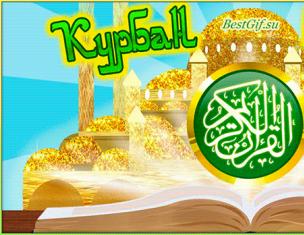The process of making balls from threads is not at all complicated and does not require much time.
Do-it-yourself balls of thread can be made from multi-colored threads different texture. It all depends on where in the interior you want to use balls of thread made do it yourself. In addition to balloons, there are great ideas for decorating vases.
To make balls of thread with your own hands, you will need:
Threads, I use dense yarn about 2 mm thick;
- PVA glue - it’s better to buy a large one right away, since you will need a lot of glue for balls of thread with your own hands and at a price a large bottle will come out much more economical (in my case, the glue is in small tubes, as my husband bought :)));
- Balloons. It is better to take balls of a round or slightly elongated shape, so that it is easier to form an even ball when winding threads;
Let's start making balls of thread with our own hands:
For do-it-yourself balls of thread, you first need to inflate the balls. Inflate the balloons to the size you expect the balloons to be. Then she ties a ponytail tightly so that they do not blow away while the threads dry, and this can happen when the ball is poorly tied. I just tie the balloon tightly with a knot. 
Pour some glue into a shallow container. We dip our fingers into the glue and distribute along the thread - 50 centimeters.
Then we begin to form our do-it-yourself ball of thread winding the thread around the ball.
! Do not wind the threads tightly to the “tail” of the ball, otherwise it will be difficult to remove the inflatable ball from the frozen thread frame.
It is not necessary to wind the thread tightly, otherwise the ball will be deformed and the shape will be distorted. The tension can be increased only in order to correct the shape of the ball and give evenness in the right places, for example, where there is a bulge.
We wind the thread in glue on a ball of layers in 7-10, it is not worth it very tightly.
!
If, on the contrary, you make too little density when winding the threads around the ball, then it may turn out to be too fragile.
Thread balls look much prettier when they have gaps in them, so they look more airy and original.
Ignore that the threads have changed color due to the glue. PVA glue has an excellent feature and it consists in the fact that when it dries, it becomes transparent. But you shouldn’t overdo it with glue either, so that the ball doesn’t look “snotty” when it dries.
When you decide that you have wound the threads around the ball in sufficient density, cut the thread, moisten the tip a little more in glue and stick it to the ball.
! We hang the balls by the tail to dry for 12 hours in a dry, warm room.
If you make balls of thread with your own hands on the Christmas Tree, then they should be denser than those balls of thread that you plan to hang under the chandelier.
The balls on the Christmas tree should be noticeable, therefore, the threads should be chosen bright and the balls should be made dense so that they contrast against the background of the Christmas tree and serve you for a single New Year.
Under the chandelier, balls of a more airy texture will look more advantageous, because the light from the lamp will beautifully shine through the holes between the threads.
Balls of thread completed do it yourself, you can beautifully decorate with artificial snow, beads, rhinestones - in general, decorate with everything that your rich imagination sees fit. The decoration of the balls is very an exciting activity, but, most likely, women will be interested in them. And, although our magazine is for women, men often look at our pages. Then they may be interested in a purely male hobby, which can be read about in the article "Beauty from wood shavings".
My dear mother-in-law used them in such a beautiful arrangement.

I will tell you about how else you can decorate vases and compose compositions in another article.
Nowadays, homemade soap making is also a very popular hobby - maybe you should try it too?
Do handmade thread balls they will be a great decoration for your home. More information about New Year's decor interior can be found in the article,
To freshen up a familiar interior or decorate a house for the holidays, it is not necessary to make expensive purchases. Gossamer balls always look spectacular as pendants, craft items, christmas toys, vases and even chandeliers. Let's consider a simple way how you can make a ball out of thread and glue with your own hands.
The essence of making a gossamer craft lies in the technique of wrapping a ball shape with threads impregnated with an adhesive composition. The glue dries, the base is removed - the decoration is ready. Then the ball can be cut or decorated, combined into groups to create a composition, etc.
A few secrets to successfully making gossamer balls
In order to make a ball of thread, first of all, you need to choose the right materials: yarn, glue, shape, glue container, brush, and prepare the workplace.

There are a few simple rules to keep in mind:
- The thinner the threads (for example, sewing), the faster and more likely it is deformed ready product. To avoid this, they should only be used for small balls (less than 8 cm in diameter). for crafts bigger size thicker threads are needed (mulina, yarn, twine, etc.), as they hold their shape better.
- However, if you have to do volumetric decoration from thin threads, they should be applied quite tightly and, in addition to glue, be fixed additionally (for example, with hairspray or building transparent varnish).
- To make a gossamer ball, you need liquid glue. Suitable silicate and PVA. (sold in tubes) is more liquid, building (in cans) is thicker and therefore “holds stronger”. Secondary glue, like hot glue, is not good at all.
- Dip the threads before serving on the form should be entirely. This can be done in two ways. In the first case, the thread will be dipped into the glue poured into an open container. In the second - go through the jar of glue, through the opposite holes at its bottom. The "correct" holes in the tube are slightly larger than the thickness of the thread (it is well wetted with glue), but the contents of the container do not flow onto the desktop.
- No need to insert candles inside crafts or install in a room with high humidity. In the first case, the ball can easily catch fire, in the second case, it can lose its shape and “go soft”. In order not to abandon the idea of installing lighting inside the ball, we advise you to choose LED bulbs based on batteries.
Detailed instructions for making balls of thread
Consider the whole process step by step. It is simple, and it can take only 15-20 minutes to get the first blank.
Step 1. Let's choose a base. For this, it is most often used Balloons different diameters or fingertips (sold in pharmacies) - for small crafts. They are good because at the end of the work they are easy to take out: pierce them and, after the air has escaped, get them through the gap without damaging the shape of the threads.

Harder bases: rubber balls and foam balls (used most often for topiary), are perfectly rounded than inflatable forms. But at the same time, they are more difficult to extract at the final stage.
Step 2 Let's prepare the form. The base, which will be tied with threads, should easily lag behind the adhesive layer of the product after drying. To do this, the entire form should be coated with petroleum jelly or oil (from a pharmacy), or liquid silicone (inexpensive, in small jars or in the form of a spray, which is much more expensive, can be purchased at sports equipment stores or auto cosmetics). It is better to remove excess lubricant with a napkin so that the yarn does not slip off the surface during operation.

Step 3 We wrap the base. Threads well moistened in glue are placed randomly on the ball. It is advisable to do this so that the threads do not intersect in one place more than 2 times. You should not stretch the winding too much (especially on an inflatable base), but nothing should sag either. In places where there is not enough glue, you need to additionally apply it with a brush.
Step 4 Drying. At this stage of work, you need to let the whole craft dry. To do this, it is desirable to hang it in a dry and warm place so that it does not touch any surface (it will not stick). Depending on the size, thickness of the winding and humidity, the product can dry up to two days. To get the finished result much faster, it is permissible to use a hair dryer.

Step 5 We take out the base. After the ball is completely dry, you need to remove it from its original shape. If this balloon, then it is usually pierced and removed through any suitable opening.

Step 6 We decorate. Any fairly light materials are suitable for decorating gossamer balls. These can be applications or inscriptions made of paper, beads, rhinestones, sequins, ribbons, etc. Balls collected in a group look spectacular. For example, for a New Year's wreath or garland.
The filling in balls will look beautiful: large beads, tinsel, serpentine, foil, confetti, etc. If necessary, the product can be painted. Aerosol paints are best for changing colors. With their help, it is easy to get shiny or matte gold and silver balls.

Advice! Hot glue is best for attaching jewelry: it is transparent, quickly hardens and gives a very strong connection.
Some interesting options for crafts from spider webs
A fairly dense ball of thread and glue can be used for topiary or other types of crafts. The main thing is that the fragile base withstand additional elements decor. Consider the technique of performing some of them.
snowman
You will need:
- three different-sized balls of white (or blue) yarn,
- eye buttons,
- orange paper nose cone
- branches for hands
- round pieces of cotton for legs,

To assemble a pyramid of balls - a blank for a future toy - you need to lightly press on a larger ball from both sides to make neat dents. Glue a medium-sized ball to one of them, and place the other on the work surface. The third part (head) is also attached.
All remaining parts are glued to the finished base. At the end, you can tie a bright yarn scarf.
Advice! To make even dents on the ball, lightly moisten this place with a wet brush.
Topiary - "tree of happiness"
For its manufacture you need:
- one ball ("crown" of the tree),
- a small pot with filler (pebbles, coffee beans, beads, etc.) to “plant” our “plant”,
- wooden or wire stick for the "trunk",
- glue,
- ornaments ("leaves" and "flowers").
Making a topiary is not so difficult: just assemble the frame (attach the ball to the stick), place the “trunk” in the pot, fill it with filler and decorate.
Most often, crepe paper flowers, bows made of satin ribbons, coffee beans, beads, quilling paper strips and much more. All this is attached to hot glue with a gun.

Flowers
Making them is very easy. All that is needed is to cut the petals around the diameter of the ball with cloves. From one ball, 2 identical blanks are obtained. Flowers can be decorated with beads, beads, "stamens" made of wire, etc.
Birds, animals
Since such crafts are very simple, they are great for competitions in kindergarten or to decorate the Christmas tree. For their manufacture, paper blanks of “wings”, “paws”, “tails”, “tufts”, etc. are needed, which are glued to the “trunk” - a ball of thread.
Vase or bowl
To get a vase or a deep plate from a gossamer ball, you need to carefully cut it in half. For the bottom, you need to slightly moisten the bottom and press it inward. When the product dries again, it will retain the desired shape.
To make the hemisphere of threads stronger, it is recommended to coat it on both sides with a colorless varnish. True, it will be possible to use such an item only for decorative purposes: it will not withstand moisture and a significant load. But at the same time it will become a highlight of any interior.
margarita
There is no greater pleasure than creating comfort in the house, filling it with unique decorations of our own production. This makes it possible to feel like a real decorator creating exclusive things. Especially if this hobby does not take you much time and does not require large financial costs. It is such a unique decor that can rightly be called balls of thread.
REQUIRED MATERIALS AND INSTRUMENTS:
To make such balls, you will need very few things, most of which you can find at home. The main thing you need to buy is an ordinary balloon, you can definitely find everything else in your sewing box. The threads fit perfectly. any: sewing, nylon, cotton by type "Irisa" or "Snowflakes", floss and even yarn - they all stick equally well. It is only important to monitor their quality so that they are tightly twisted and not fluffy, otherwise appearance products will deteriorate.
As for the color, then you can give scope to your imagination. By the way, if you can’t find the thread of the desired shade, then make the ball white, and then you can always tint it by buying a can of paint.
You can also use the glue that you have Houses: PVA, stationery or even paste. Sometimes, to add hardness to the balls, the glue is diluted with water and mixed with sugar or starch.
Prepare for the following materials:
threads "Iris" white;
round balloon;
ribbons for decoration;
PVA glue;
long needle;

First, inflate the balloon up to required size, about 5-10 centimeters in diameter and tie it tightly with a thread.
We will wind the threads on the resulting shape. And in order for them to hold well and retain their shape, they must be thoroughly smeared with glue. Applying glue to a long thread is a rather difficult and very easily soiled task, so we offer a simpler and convenient way. Take a long needle, thread a thread into it and pierce the glue bottle through with this needle. Pull the needle and thread through the bottle PVA glue. At the output, you will get a sufficiently impregnated thread, which will only be wound around a balloon.

Just pay attention, the needle should not be too small, otherwise the thread will not be able to soak well, but it should not be too large so that the glue does not flow out through the hole. You definitely can't go wrong if you choose a needle that is slightly thicker than thread.
Now attach the thread to the ball and, holding its edge, begin to gradually wrap the ball in an arbitrary direction, all the while pulling the thread soaked in glue. If it seems to you that the thread is dry, then in the process of work, periodically lightly press the plastic bottle so that more comes out. glue. Continue winding the ball until there are no large holes between the threads.
To dry the ball of threads, leave it for several hours. If you are planning in the near future do a few more of these balls, then it’s better not to get the thread out of the jar of glue.
When you are sure the balloon is dry, you can untie the balloon.
It will begin to deflate and move away from the walls on its own. thread ball. Carefully remove it through the hole between the threads and, if it is not damaged, you can use it again.

all that remains is to decorate the ball with a ribbon, carefully threading it between the threads, and hang it on the Christmas tree. This toy looks very neat and original.

Related publications:
Here you inflated the balloon, And then the wind blew. You need to tie a thread to hold the ball. Created for kids Colorful balloons! All and adults.
Good day to all friends and guests of my page! Each of you has come across a situation where you urgently need to put something down somewhere.
 Lesson using non-traditional technique drawing. Topic: "Frost patterns" Purpose: development in children creativity, acquaintance.
Lesson using non-traditional technique drawing. Topic: "Frost patterns" Purpose: development in children creativity, acquaintance.
 Dear readers! This time I want to present you a master class on how to make a dove mask. The fact is that in preparation for sports.
Dear readers! This time I want to present you a master class on how to make a dove mask. The fact is that in preparation for sports.
Drawing using the non-traditional method "Salt with gouache" Purpose: to teach how to arrange images on a sheet, to form an aesthetic taste,.
 For the manufacture of Christmas ball need color satin ribbon 40 cm, any cotton or silk thread in the amount of 1 skein, hook.
For the manufacture of Christmas ball need color satin ribbon 40 cm, any cotton or silk thread in the amount of 1 skein, hook.
Of the most simple threads and PVA glue can be made very interesting gift souvenirs And . Even a crumb of three years will cope with this task. The principle of all crafts is the same: grease the threads with glue and shape them, and then let them dry completely.
Ball of thread and glue
Do original Christmas decoration we will be from "Iris" threads, PVA glue and a balloon. You will also need scissors and a large needle. Now consider step by step instructions how to make a ball of thread and glue.
- We inflate a balloon. Practice shows that a diameter of 5-10 cm is enough.
- Next, we thread a thread into the needle. We pierce the bottle with glue through and through. Thus, our thread will be immediately ready for use. Pick up the needle so that it is slightly thicker than the thread.
- Now we begin to wrap the ball with a thread soaked in glue.
- We wrap in different directions try to avoid gaps.
- Once you have evenly distributed the thread over the surface, it can be cut. We fill the tip under the remaining layers.
- Let the piece dry overnight.
- A completely dried ball can simply burst or be carefully untied. The air will begin to come out and as a result, only the frame of their threads will be obtained in the form of a Christmas tree toy.
- It remains to tie a ribbon and hang the decoration on the Christmas tree.
 |
 |
|
 |
 |
 |
 |
 |
 |
Good day, dear needlewomen! It just so happened that I post on the site all my materials that I make with my own hands, although sometimes they are not sewing, but simply handmade.
In fact, there is no particular difficulty in this process and the Internet is simply replete with information on how to do this. But ... .. it is not always possible to do this perfectly, and if you do not yet have such experience, then small nuances and secrets will come in handy in any case)).
Thread balls are used for various decorative purposes: decorating the ceiling, curtains, etc. I also needed to make shades for the chandelier, and it turned out very beautiful and unusual. 

You will need for this case:
- rubber balloons for inflating
- PVA glue
- threads
- starch
And now I will dwell on these components of the process in more detail.
Threads
Threads can be different - acrylic, cotton, but it is not advised to just take woolen threads for these purposes. 100% synthetic is perfect.
balls
I needed the largest balls for the chandelier, and, as it turns out, there are not so many types. So take balls with a ring at the end, it is very convenient to hang a ball heavy from glue after spreading, and the shape of the ball is not deformed thanks to this ring.

Glue
Perhaps this is the most important point in the process of preparation, since the glue must be taken exclusively at a hardware store, and it should be written on it that it is intended for gluing wooden surfaces. Do not take glue in ordinary stationery stores, as it is initially diluted with water there.
And I was also advised to use liquid glass instead of PVA glue. It is also sold in a hardware store, it looks like glue in consistency, and a chandelier made of such material will generally be eternal. But I haven't tried this method yet.
You also need to prepare the glue a little: dilute three tablespoons of starch with water, stir well and add this mixture to a half-liter jar of PVA glue, so the glue will become a little thinner, it will be easier to apply to the threads, and the starch will give even more strength to the product.
So, we inflate the balls and lubricate them with any oil - technical, sunflower or Johnson's baby ... This is necessary so that the glue does not stick to the ball, but rolls off in places where there are no threads, and does not create a thin film when dried.
How to wind threads?
It’s probably more convenient to do it together, but not always “this second” is nearby, so it’s important to adapt to the spreading process yourself, I tried several methods, tried to put the thread through a half-liter plastic bottle, I don’t know how other masters did it, maybe their thread was “live”, but my thread stubbornly did not want to climb through a thin hole in the bottle ...
Therefore, I had only one option left - to smear, but apply glue to the threads directly with my hands.
Therefore, we take a large basin and pour a little glue on the bottom there.
We tie the first wrap of the thread into a knot and begin to evenly wind the threads around the ball. You can dip the threads into the glue in small portions and then wind them up, but in this case the threads can get tangled, or you can simply smear the thread evenly with your hands at the moment it is applied to the ball, this, of course, takes longer, but you don’t have to be nervous when the threads get tangled ...
And do not forget to cover the work surface with oilcloth, because, no matter how hard you try, everything is covered in glue!
We hang the well-wound ball for a couple of days to dry, then carefully blow off the rubber ball and take it out. The ball of thread is ready!













